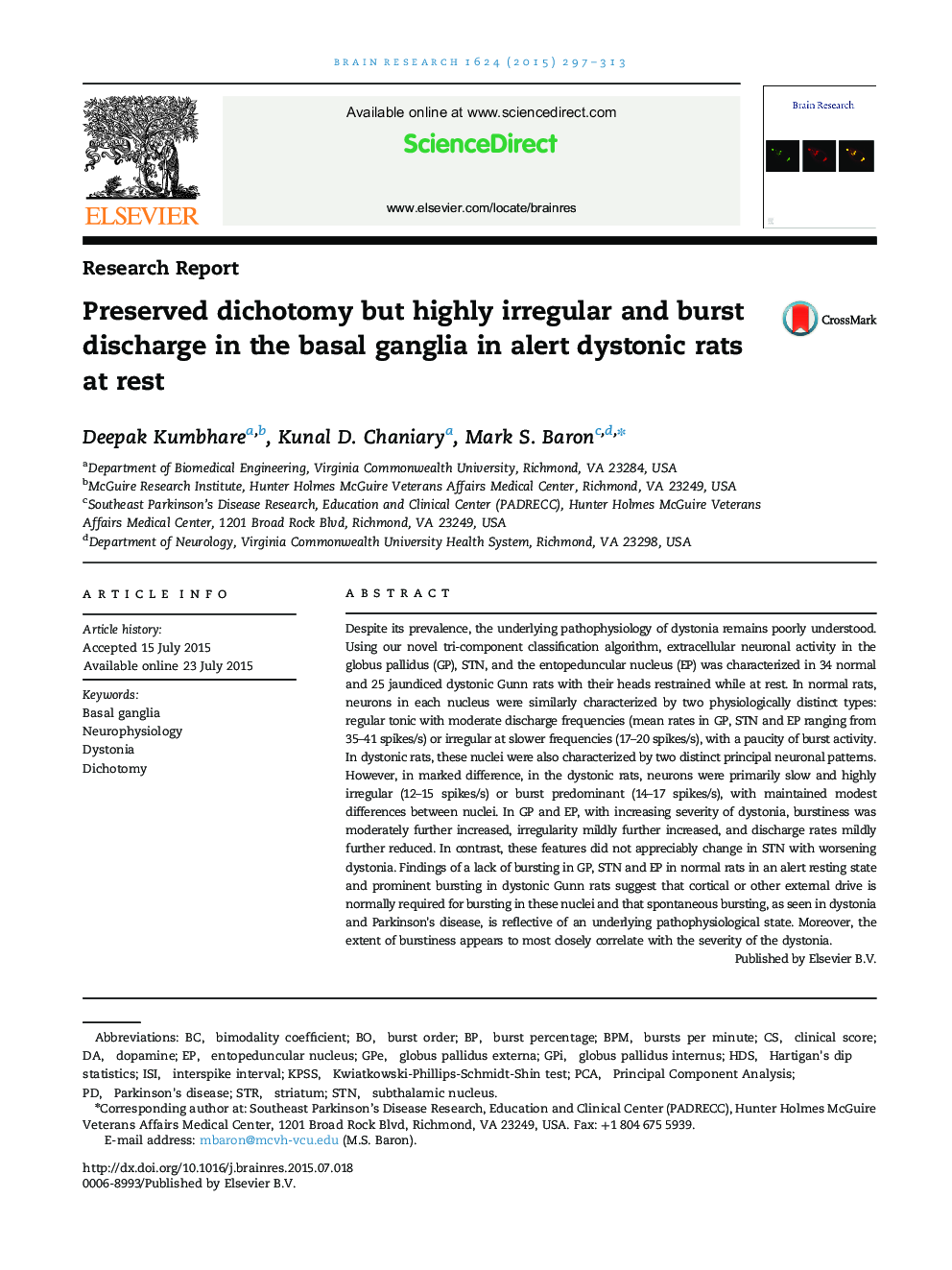| کد مقاله | کد نشریه | سال انتشار | مقاله انگلیسی | نسخه تمام متن |
|---|---|---|---|---|
| 6262906 | 1613815 | 2015 | 17 صفحه PDF | دانلود رایگان |
- Signals were recorded in alert head restrained normal and dystonic rats at rest.
- Globus pallidus, subthalamus and entopeduncular nucleus were targeted.
- Normal rats showed dichotomous fast regular and slow irregular discharge.
- Dystonic rats showed abnormally slow irregular or bursty discharge activity.
- Dystonia severity correlated most with burstiness and modestly with irregularity.
Despite its prevalence, the underlying pathophysiology of dystonia remains poorly understood. Using our novel tri-component classification algorithm, extracellular neuronal activity in the globus pallidus (GP), STN, and the entopeduncular nucleus (EP) was characterized in 34 normal and 25 jaundiced dystonic Gunn rats with their heads restrained while at rest. In normal rats, neurons in each nucleus were similarly characterized by two physiologically distinct types: regular tonic with moderate discharge frequencies (mean rates in GP, STN and EP ranging from 35-41 spikes/s) or irregular at slower frequencies (17-20 spikes/s), with a paucity of burst activity. In dystonic rats, these nuclei were also characterized by two distinct principal neuronal patterns. However, in marked difference, in the dystonic rats, neurons were primarily slow and highly irregular (12-15 spikes/s) or burst predominant (14-17 spikes/s), with maintained modest differences between nuclei. In GP and EP, with increasing severity of dystonia, burstiness was moderately further increased, irregularity mildly further increased, and discharge rates mildly further reduced. In contrast, these features did not appreciably change in STN with worsening dystonia. Findings of a lack of bursting in GP, STN and EP in normal rats in an alert resting state and prominent bursting in dystonic Gunn rats suggest that cortical or other external drive is normally required for bursting in these nuclei and that spontaneous bursting, as seen in dystonia and Parkinson׳s disease, is reflective of an underlying pathophysiological state. Moreover, the extent of burstiness appears to most closely correlate with the severity of the dystonia.
Journal: Brain Research - Volume 1624, 22 October 2015, Pages 297-313
